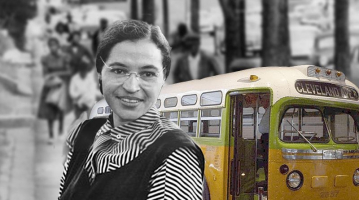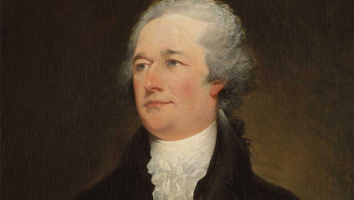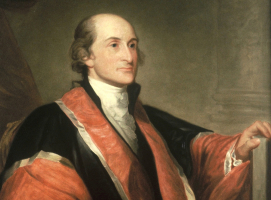Top 10 Facts about Alan Turing
English mathematician, computer scientist, logician, cryptanalyst, philosopher, and theoretical biologist Alan Mathison Turing OBE FRS (23 June 1912 – 7 June ... read more...1954). Turing had a significant impact on the growth of theoretical computer science by formalizing algorithm and computation principles using the Turing machine, which is a model for a general-purpose computer. To learn more about this talented man, let's read some facts about Alan Turing.
-
His father worked for the ICS is the first fact about Alan Turing we want to mention. Alan Turing was born on June 23, 1912 in Maida Vale, London. A blue plaque honors the location of his birth. He had many relatives in India. Turing's unique name placed his father in a distinguished line of English gentry. He was not wealthy, but he was unmistakably upper middle class in the particular meaning of the English class system. In the Madras Presidency, when his father served as a member of the Indian Civil Service, he met and wed Ethel Sara Stoney. She was the daughter of the Madras Railways' head engineer, who came from an Anglo-Irish family with a somewhat low social standing. An East India Company rule prohibiting the employment of males with Indian mothers was first introduced in the 1790s as a result of the physical characteristics of one of the Turings born in Madras.
Despite being born in a nursing home in Paddington, London, Alan Turing was actually conceived in British India, most likely in the town of Chatrapur. While Turing was growing up, his parents moved back and forth between Guildford, England and India due to his father's ongoing civil service commission. They sent their two sons to live with friends in England rather than risking their health in the British colony. Turing was sent to boarding schools for private students while his father was gone in India. He struggled with social integration in the beginning, but after that, he excelled in science and math.

Photo: Pinterest 
Photo: BBC -
Turing showed outstanding aptitude in math and science from a young age. At the age of 6, his parents enrolled him in the day school St. Michael's. His headmistress and several of his subsequent teachers soon recognized his brilliance. He enrolled at Sherborne School in Dorset in 1926, when he was 14 years old. He was so determined to attend his first day at Sherborne that he rode his bike alone more than sixty miles from Southampton to the school during a transportation strike in England, stopping for the night at an inn and garnering national attention in the local press. He was capable of solving complex issues without having studied simple mathematics. The headquarter wrote to his parents: “His headmaster wrote to his parents: "I hope he will not fall between two schools. If he is to stay at public school, he must aim at becoming educated. If he is to be solely a Scientific Specialist, he is wasting his time at a public school."
Turing continued to excel in the subjects he enjoyed, answering complex questions in 1927 without having even learned basic calculus. When Turing first saw Albert Einstein's work in 1928, he was sixteen years old. Not only did he understand it, but he extrapolated Einstein's skepticism of Isaac Newton's laws of motion from a text in which this was never stated explicitly.

Photo: Timetoast 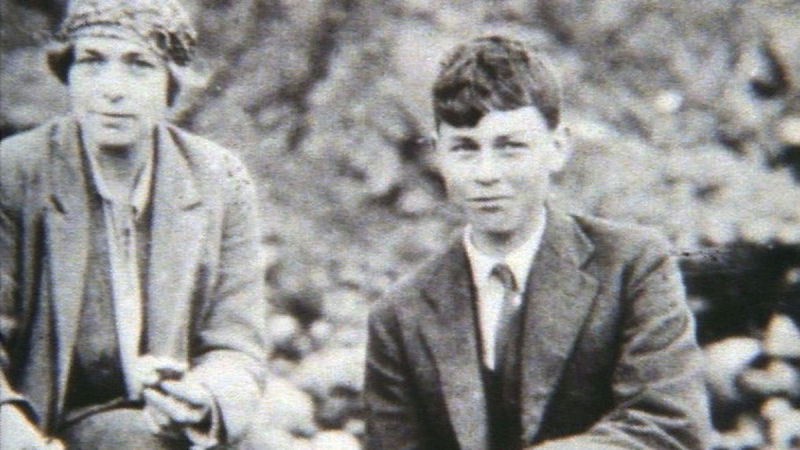
Photo: BBC -
In 1931, Turing enrolled at King's College in Cambridge, where he later earned the title of fellow. His concept of a universal computer that could be fed an algorithm for a specific computation and then apply it was among the ground-breaking concepts that came next. It was a concept that would play a crucial role in the creation of the modern computers that we use today.
Alan Turing wrote a paper titled "On Computable Numbers, with an Application to the Entscheidungsproblem" in 1936 while pursuing his doctorate at Princeton University. This work laid the groundwork for computer science. Turing envisioned a hypothetical computer in it that could resolve any issue that could be stated by straightforward instructions written on paper tape. Square roots could be calculated by one Turing machine, while Sudoku puzzles could be solved by another. Turing proved that a single Universal Machine capable of simulating any Turing Machine could be built. The fundamental idea behind the modern computer was credited to this work, according to Von Neumann. Turing suggested an experiment to determine whether a machine was "intelligent" in 1950. A computer may be deemed to "think" if a human interrogator could not tell it apart from a human being through dialogue. The Turing test is now the name of the test.

Photo: TechUnwrapped 
Photo: HNF Blog -
Turing arrived at the Government Code and Cypher School's wartime station at Bletchley Park on September 4, 1939, the day after the UK declared war on Germany (GCCS). At Bletchley Park in Buckinghamshire, where top-secret work was done to break the military codes employed by Germany and her allies, Turing began working there full-time. The "Enigma" code was the main focus of Turing's work at Bletchley.
The German military employed the Enigma, a specific sort of enciphering device, to convey encrypted messages. Despite the fact that Polish mathematicians had figured out how to decipher Enigma communications and had informed the British of their discovery, the Germans strengthened Enigma's security at the start of the war by regularly updating the encryption system. This made it considerably more challenging to decipher the code. Turing was instrumental in this, co-inventing the Bombe computer with fellow code-breaker Gordon Welchman. The work of the codebreakers was greatly lessened thanks to this technology. German Air Force signals began to be read at Bletchley in the middle of 1940, and the intelligence gleaned from them aided the war effort. His bomb invention is thought to have cut the European conflict by two to four years. The majority of Alan Turing's work at Bletchley Park is referenced in the 2014 Oscar-winning film The Imitation Game.

Photo: Google Arts & Culture 
Photo: LADbible -
To continue the list of facts about Alan Turing, Toplist will talk about his oddities. Alan Turing was known for his quirky behavior. Colleagues at Bletchley Park referred to him as "Prof," and his works on the Enigma were known as "Prof's Book." Additionally, it was claimed that Turing had shackled his mug to the radiator pipes to stop anyone else from using it. He battled his allergies by donning a gas mask while riding his bike. He knew just when to dismount to fasten the broken chain before it slipped off his bike rather than fix it.His oddities, among other things, have prompted some to speculate that he had Asperger's syndrome, though this has not been proved, and there is no real way to tell if that was the case because the legitimacy of retroactive diagnosis is debatable.
He made a marriage proposal to Joan Clarke, a Hut 8 coworker, when he was at Bletchley Park. The marriage was approved by Clarke, a mathematician and cryptanalyst as well. The marriage could not go ahead after Turing exposed his homosexuality, so the engagement ended. Though it's possible that Clarke wasn't overly surprised by the disclosure because he was described as being "unfazed" by the statement.

Photo: Bletchey Park Source: Perimeter Institute for Theoretical Physics -
He met young Arnold Murray in 1952 while walking home after seeing a movie. After striking up a discussion and going out to lunch, the couple quickly started dating. The events that would transpire would alter Alan's life forever. A friend of Murray's broke into his house around the end of January 1952. When Alan called the police to report the crime, they questioned him about his relationship to Murray. When Alan publicly admitted they were dating, Murray was also detained for "gross immorality". At that time, homosexuality would remain a crime in England until 1967.
Alan chose to plead guilty to the charges on the counsel of his brother, and after being found guilty, he was given the option of serving time in prison or a probationary period that included injections of synthetic oestrogen as "therapy" for his sexual orientation (chemical castration). Alan chose the latter, and for the following year he experienced gynecomastia and impotence (male breast enlargement). As a result of the authorities' perception that Alan's sexuality posed a threat to state secrets being obtained through blackmail, his security clearance at GCHQ (the organization that succeeded Bletchley Park) was also revoked. Alan also expressed concern that his sexuality would be used to discredit his intellectual ideas in a letter to his friend Norman Routledge. Alan maintained a rather positive attitude despite this state-approved torment and compared his last day in court to the sensation of "agreeable irresponsibility" that he frequently experienced at school.
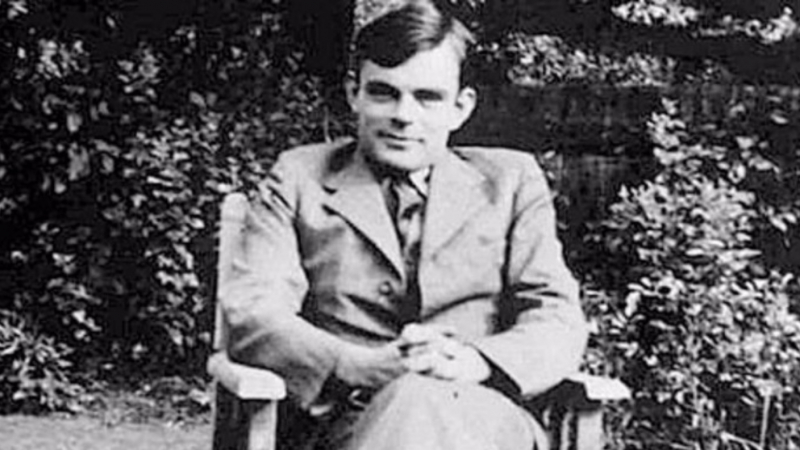
Photo: ITV 
Photo: The Guardian -
The British Prime Minister Gordon Brown issued an official public apology on behalf of the British government for "the horrible way Turing was treated" in 2009 following a widespread public campaign. This is the next fact about Alan Turing in this list. Brown referred to Turing's treatment as "horrifying" and "very unfair," and he claimed that the nation owed a great obligation to the bright mathematician. He declared that making an official apology made him proud. In a message published on the No 10 website, Brown writes, "We're sorry, you deserved so much better."
An online petition initiated by Liberal Democrat lawmaker John Graham-Cumming demanded an official apology from the government for charging Alan Turing as a homosexual. The author Ian McEwan, the scientist Richard Dawkins, and the gay rights activist Peter Tatchell are among the thousands of people who have signed a Downing Street petition seeking for an official apology. On September 10, Prime Minister Gordon Brown issued an apology on behalf of the previous administration and referred to Turing's treatment as "utterly unfair." 2013 saw the granting of a posthumous pardon by Queen Elizabeth II. Informally, the term "Alan Turing law" currently refers to a 2017 British law that retroactively absolved those cautioned or convicted under earlier laws that forbade gay activities.
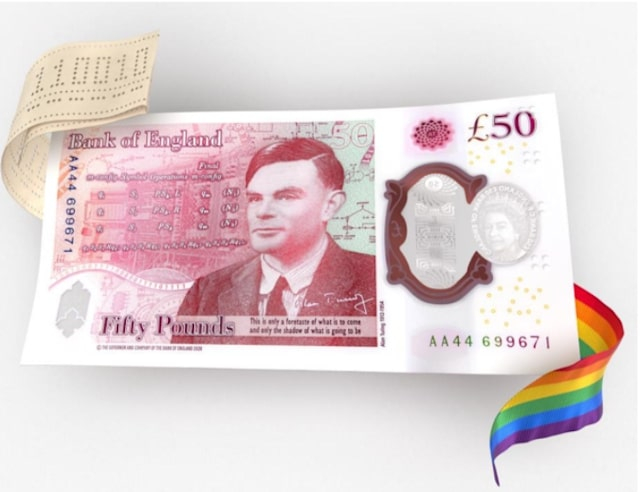
Photo: Yahoo Finance 
Photo: The Spectator -
Alan Turing was discovered dead by his cleaner on June 8, 1954. Cyanide poisoning was the reason behind his demise. By his bed, a half-eaten apple was discovered. It is believed that Alan committed suicide using an apple, despite the fact that the fruit was never checked for cyanide. Turing did not exhibit any signs of melancholy prior to his passing, and many people, including Turing's mother, think that he accidentally ingested cyanide and that his death was not the result of suicide.
An investigation revealed that he had killed himself. Both biographers Andrew Hodges and David Leavitt hypothesized that Turing was acting out a scenario from his favorite fairy tale, Snow White and the Seven Dwarfs (1937) from Walt Disney. Leavitt claimed that he "took an especially acute delight in the scene where the Wicked Queen immerses her apple in the toxic concoction," which was mentioned by both men. On June 12, 1954, Turing's remains were cremated at Woking Crematorium. His ashes were then dispersed around the crematorium's gardens, much like his father's had been.
The coroner's historic conclusion has been contested in a number of ways by philosopher Jack Copeland. He proposed an alternative theory for Turing's demise: unintentional cyanide inhalation via a device used to electroplate gold onto spoons. The mother of Turing thought that the ingestion was unintentional and the result of her son's negligent handling of laboratory chemicals. According to biographer Andrew Hodges, Turing planned the delivery of the equipment to give his mother convincing denial for any suicide allegations.

Photo: Cultura Collectiva news 
Photo: Jurys Inn -
It's a common misconception that Alan Turing is being honored by the distinctive Apple logo, which features a half-eaten apple. What a fact about Alan Turing! Fast-forward around 20 years after Turing’s death to a garage where a few men are building personal computers. They already had a name for their product, but now they required a logo. The men chose to remove a single bite from the apple graphic they had chosen to represent their company in honor of Turing and to make a statement about his persecution. They were aware of Turing's contributions to computers and coding. Our phones, PCs, and iPods all have the recognizable Apple logo thanks to this.
That's how the narrative goes. But even though it's nice, the logo's creator claims that it's simply untrue. According to the designer, the apple was just bit into to ensure that it wasn't mistaken for a cherry. Even while Steve Jobs acknowledged that it wasn't a purposeful allusion to Turing, he reportedly remarked, "God, we wish it were," as reported by Stephen Fry.
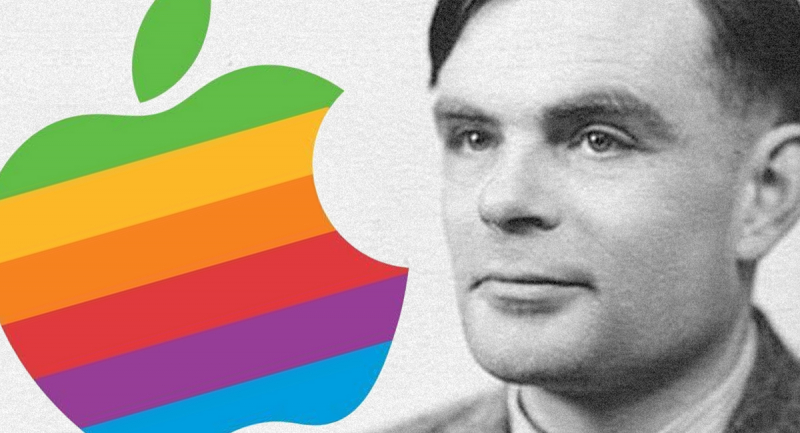
Photo: Manchester's Finest 
Photo: YAN -
Since 1966, the computing community has recognized achievements in theory or practice with the Turing Award. It is frequently referred to as the computing industry's Nobel Prize. One of the 100 Most Important People of the 20th century, according to Time Magazine in 1999, was Turing. Turing came in at number twenty in the BBC's list of the 100 Greatest Britons in 2002. In Manchester's Sackville Park, a statue of Alan Turing was unveiled on June 23, 2001. The statue shows Turing holding an apple, a metaphor for forbidden love, the thing that gave rise to Newton's theory of gravitation, and the thing that many believe Turing used to commit suicide.
Alan Turing accomplished more in a short period of time than anyone could aspire do in a lifetime. He exhibited a highly-disciplined personality capable of becoming an authority in just about whatever he had an interest in thanks to his capacity to conceptualize the unfathomable and put these lofty thoughts down on paper, then into practice. Even if not all of Turing's discoveries—such as the Bombe that cracked the Enigma code—were crucial in winning the war, each theory or creation opened the door for later generations of scientists to expand upon, modify, and perfect Turing's concepts.

Photo: Leader Biography 
Photo: CodePen























